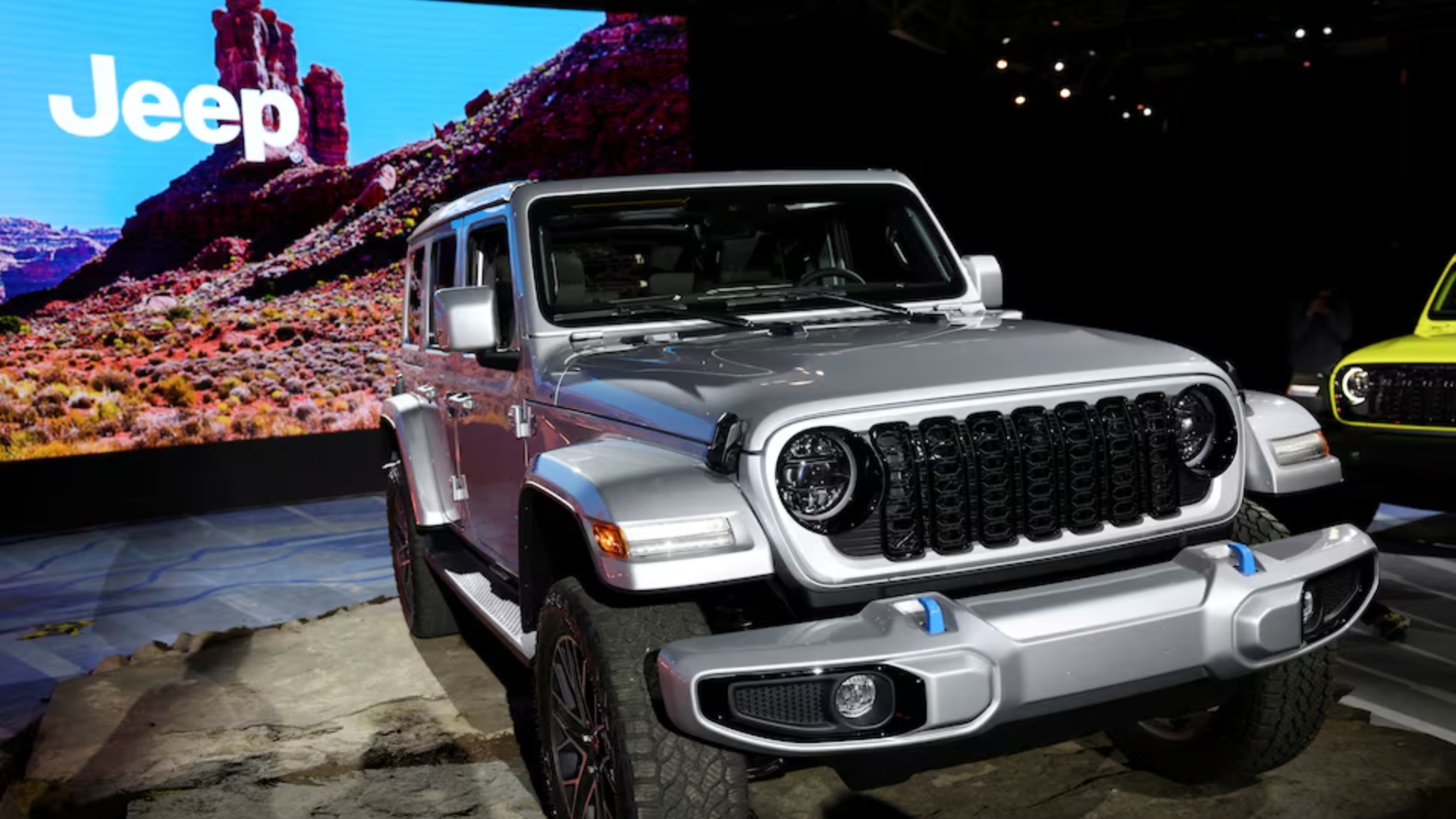DETROIT, (Reuters) – As U.S. sales of gas-electric hybrid vehicles surge and electric-vehicle sales cool, automakers and suppliers are betting consumer demand for a compromise between all-combustion and all-electric is a durable trend.
Automakers and suppliers are adding capacity to build gasoline-electric hybrid and plug-in hybrid vehicles for the U.S. market, responding to increased consumer demand for technology that General Motors and other automakers once planned to phase out in favor of all-electric fleets, industry executives and analysts said.
U.S. sales of hybrids grew five times faster than EV sales in February, Morgan Stanley said. A plug-in hybrid version of the Jeep Wrangler SUV accounted for half of total U.S. Wrangler sales in the second half of 2023, up from 37% in the first half of the year, Stellantis said.
Sales of Ford Motor hybrids rose nearly 37% during the first two months of the year, driven by demand for the hybrid Maverick compact truck that starts at $25,315.
“The hottest car on our lot right now is the Maverick hybrid,” said Scott Simmers, general manager at Palm Springs Motors in Cathedral City, California.
The hybrid Maverick now accounts for about half the model’s sales and dealers said they could sell more if Ford could build them.
“We had to rush to add capacity for Maverick,” Jim Baumbick, Ford vice president for product development, told Reuters. “We added a whole third shift to respond to demand.”
The industry shift toward hybrids challenges the Biden administration’s pro-EV climate policies, and environmental groups that want automakers to phase out CO2-emitting internal combustion engines as quickly as possible.
The White House is expected this month to issue vehicle CO2 emissions standards designed to force automakers to increase the share of fully electric vehicles they sell to as much as 60% by 2030.
The November U.S. presidential election puts the White House’s EV subsidies and emissions rules at risk, however. Most legacy automakers lose money on EVs and hybrids are a more profitable path to reducing CO2 emissions if a future administration changes course, analysts said.
“Hybrids are a big hedge against an administrative change that cools down the push from a regulatory standpoint,” said Mark Wakefield, head of AlixPartners’ global automotive practice.
Supporters of strong limits on combustion-engine emissions are concerned the Biden administration could offer incentives for automakers to sell more plug-in hybrids with combustion motors. “If the hybrids are flying off the lot, there is no need for EPA (the Environmental Protection Agency) to further encourage their sale with loopholes that allow more pollution,” said Dan Becker of the Center for Biological Diversity in Washington.
Led by Toyota, Ford and Honda, North American production of hybrids could rise to as much as 20% of total light-vehicle production by 2025, compared with 14% for EVs, according to data provided to Reuters by AutoForecast Solutions.
“While the EV outlook has been depressed by about a million units in the last year, hybrid models have surged by roughly the same volume,” AFS Vice President Sam Fiorani told Reuters.
INVESTING IN HYBRID DEMAND
Suppliers such as Schaeffler are making long-term investments to expand capacity for hybrid production.
The German company plans to invest $230 million in a new factory in Dover, Ohio, to increase production of electric axles used in hybrid drive systems. Schaeffler currently supplies key components for the hybrid systems offered in Ford F-150 pickup trucks.
Ford has said it plans to double the share of hybrid F-150s to 20% of sales. Marc McGrath, chief of Schaeffler’s U.S. operations, told Reuters he expects even wider adoption of hybrid powertrains for heavy-duty pickups and large sport utility vehicles.
“We see discussions with all the major (automakers) in that segment,” McGrath said.
Hybrid demand is fueled by consumers like Jeremy Ashton of East New Market, Maryland.
Frustrated by the poor fuel economy of his V-8 powered Ford F-150 truck, Ashton shopped for a replacement and bought an F-150 hybrid for about $61,000. Comparable gasoline-only trucks “were priced the same. Some of the gas ones are more expensive,” Ashton said in an interview.
Ashton said he did not like the looks of Ford’s all-electric Lightning pickup or the challenge of charging. So far, Ashton said his white hybrid F-150 is delivering 22 to 24 miles per gallon. “It is much better on gas.”
Dave Wilson, head of the Preston dealership group in Maryland, said he began ordering more hybrid models last August and September. “We were bullish on them,” he said. In December, hybrids accounted for about 35% of total F-150 sales at the dealership.
For the 2024 model year, Ford F-150 hybrids will start at the same price as F-150s with 3.5 liter turbo-charged EcoBoost engines.
Toyota, long the leader in the U.S. hybrid market, plans significant increases in the number of hybrid models and overall sales of hybrids, Toyota brand chief David Christ told Reuters.
“Last year, 29% of sales were hybrid. Year-to-date it is 37%. We expect this year to be closer to 45% of our total volume,” Christ said.
Toyota’s next-generation Camry sedan launching this year will be offered only with hybrid powertrains.
Toyota has narrowed the price premium it charges for hybrids over comparable combustion-engine vehicles as it has scaled up production. The price gap used to be as much as $6,000 to $7,000, Christ said. Now, it is $1,500 and $2,000.
“That’s more attainable and the consumer sees more value in the car,” he said.
Reporting by Joe White in Detroit Editing by Matthew Lewis











